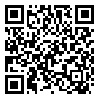Tue, Dec 2, 2025
[Archive]
Volume 14, Issue 43 (2021)
JMED 2021, 14(43): 64-76 |
Back to browse issues page
Research code: 3499
Ethics code: R.SKUMS.REC.1399.221
Download citation:
BibTeX | RIS | EndNote | Medlars | ProCite | Reference Manager | RefWorks
Send citation to:



BibTeX | RIS | EndNote | Medlars | ProCite | Reference Manager | RefWorks
Send citation to:
Atarod M, Doosti Irani M. Improvement of Clinical Education of Radiography Skills with a Participatory Approach: An Action Research. JMED 2021; 14 (43) :64-76
URL: http://edujournal.zums.ac.ir/article-1-1455-en.html
URL: http://edujournal.zums.ac.ir/article-1-1455-en.html
1- Department of Medical Physics, School of Allied Medical Sciences, Shahrekord University of Medical Sciences, Shahrekord, Iran.
2- Department of Operating Room, School of Nursing and Midwifery, Shahrekord University of Medical Sciences, Shahrekord, Iran. ,mehri.doosti@gmail.com
2- Department of Operating Room, School of Nursing and Midwifery, Shahrekord University of Medical Sciences, Shahrekord, Iran. ,
Abstract: (4954 Views)
Background & Objective: This study aimed to recognize the clinical education challenges of radiographytechnology students and to improve the current clinical education status by the action research approach.
Materials & Methods: This was action research performed by Kemmis and McTaggart approach in four academic semesters during 2019-2020 at Shahrekord University of Medical Sciences. In total, 48 third and fourth-year radiographytechnology students, as well as the department chairman and two educators were enrolled in the study. Individual semi-structured interviews were made with the subjects with a focus on the identification of problems and presenting solutions. In addition, data were analyzed by a conventional content analysis method. The proposed strategies were exploited in the implementation stage and the effectiveness of the program was assessed by individual interviews and group sessions.
Results: The planning stage findings demonstrated that improper design and organization of apprenticeship programs, incompatibility of clinical courses with theory courses, inefficient training in the hospital, inadequate summative evaluation, and lack of welfare facilities in the hospital were regarded as barriers to clinical learning of students. Following determining and classification of issues, measures were taken in the implementation stage in cooperation with the educational authorities of the faculty and clinic to achieve goals in this field. In addition, observation and reflection results confirmed students’ satisfaction with early return measures.
Conclusion: The participation of clinical education experts and radiographytechnology students led to a more accurate understanding of problems of clinical education and examining possible solutions to improve the situation. Students were clearly satisfied with the changes made in the implementation stage. Overall, students had a positive reaction for being a member of the planning group to eliminate their education problems.
Materials & Methods: This was action research performed by Kemmis and McTaggart approach in four academic semesters during 2019-2020 at Shahrekord University of Medical Sciences. In total, 48 third and fourth-year radiographytechnology students, as well as the department chairman and two educators were enrolled in the study. Individual semi-structured interviews were made with the subjects with a focus on the identification of problems and presenting solutions. In addition, data were analyzed by a conventional content analysis method. The proposed strategies were exploited in the implementation stage and the effectiveness of the program was assessed by individual interviews and group sessions.
Results: The planning stage findings demonstrated that improper design and organization of apprenticeship programs, incompatibility of clinical courses with theory courses, inefficient training in the hospital, inadequate summative evaluation, and lack of welfare facilities in the hospital were regarded as barriers to clinical learning of students. Following determining and classification of issues, measures were taken in the implementation stage in cooperation with the educational authorities of the faculty and clinic to achieve goals in this field. In addition, observation and reflection results confirmed students’ satisfaction with early return measures.
Conclusion: The participation of clinical education experts and radiographytechnology students led to a more accurate understanding of problems of clinical education and examining possible solutions to improve the situation. Students were clearly satisfied with the changes made in the implementation stage. Overall, students had a positive reaction for being a member of the planning group to eliminate their education problems.
Article Type : Orginal Research |
Received: 2021/05/23 | Accepted: 2021/09/5 | Published: 2021/12/7
Received: 2021/05/23 | Accepted: 2021/09/5 | Published: 2021/12/7
Send email to the article author
| Rights and permissions | |
 |
This work is licensed under a Creative Commons Attribution-NonCommercial 4.0 International License. |





